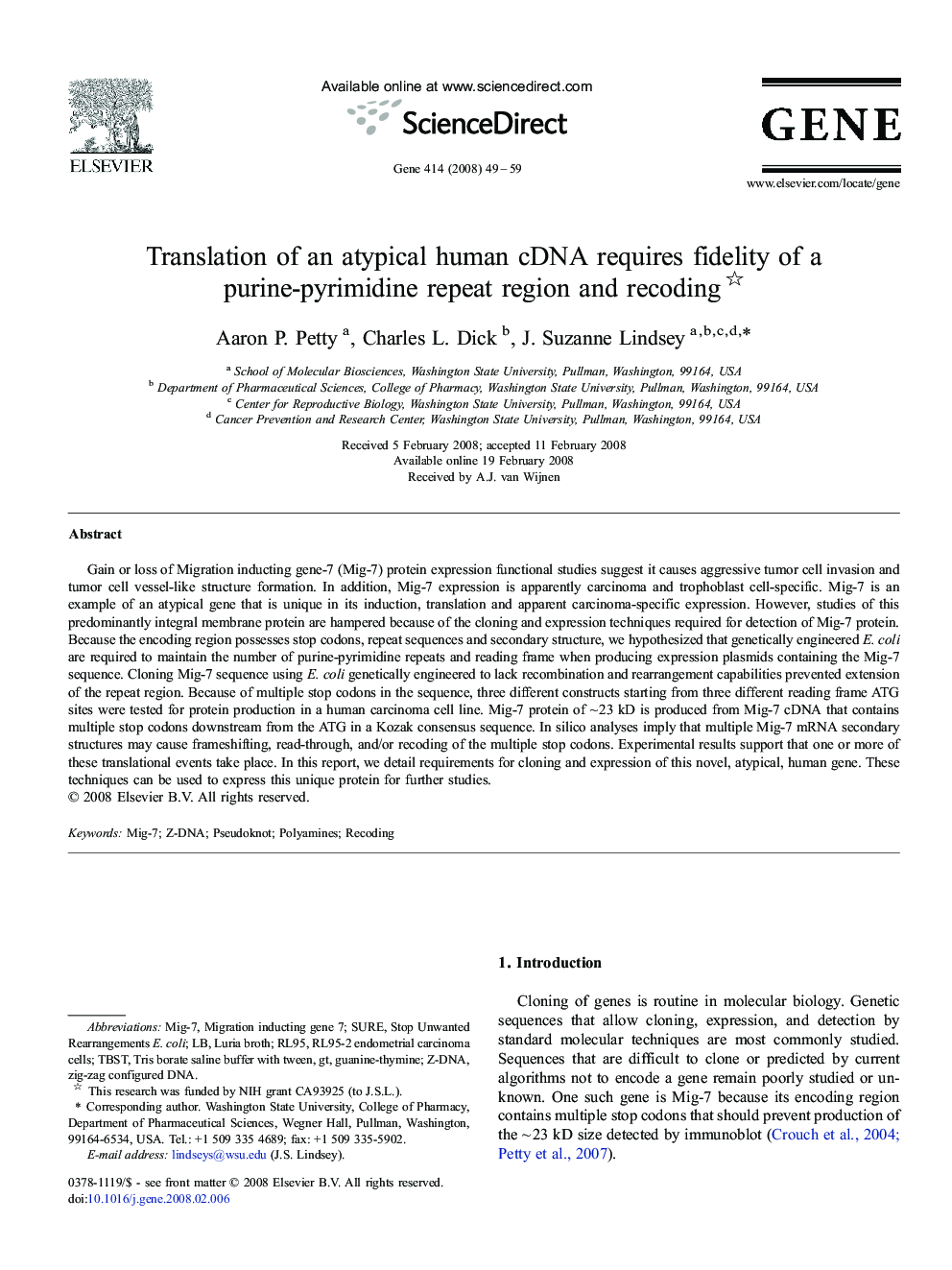| Article ID | Journal | Published Year | Pages | File Type |
|---|---|---|---|---|
| 2819315 | Gene | 2008 | 11 Pages |
Gain or loss of Migration inducting gene-7 (Mig-7) protein expression functional studies suggest it causes aggressive tumor cell invasion and tumor cell vessel-like structure formation. In addition, Mig-7 expression is apparently carcinoma and trophoblast cell-specific. Mig-7 is an example of an atypical gene that is unique in its induction, translation and apparent carcinoma-specific expression. However, studies of this predominantly integral membrane protein are hampered because of the cloning and expression techniques required for detection of Mig-7 protein. Because the encoding region possesses stop codons, repeat sequences and secondary structure, we hypothesized that genetically engineered E. coli are required to maintain the number of purine-pyrimidine repeats and reading frame when producing expression plasmids containing the Mig-7 sequence. Cloning Mig-7 sequence using E. coli genetically engineered to lack recombination and rearrangement capabilities prevented extension of the repeat region. Because of multiple stop codons in the sequence, three different constructs starting from three different reading frame ATG sites were tested for protein production in a human carcinoma cell line. Mig-7 protein of ~ 23 kD is produced from Mig-7 cDNA that contains multiple stop codons downstream from the ATG in a Kozak consensus sequence. In silico analyses imply that multiple Mig-7 mRNA secondary structures may cause frameshifting, read-through, and/or recoding of the multiple stop codons. Experimental results support that one or more of these translational events take place. In this report, we detail requirements for cloning and expression of this novel, atypical, human gene. These techniques can be used to express this unique protein for further studies.
